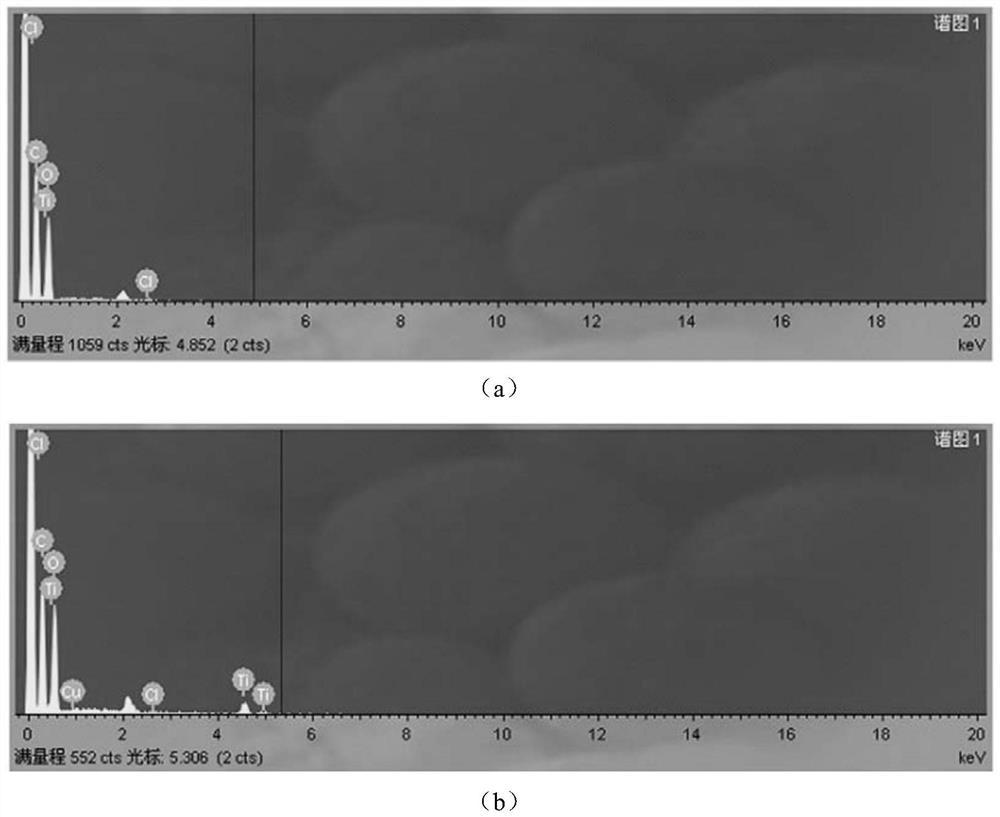Preparation method and application of hybrid membrane adsorbent for removing copper ions in water
A technology of copper ions and hybrid membranes, applied in chemical instruments and methods, adsorption water/sewage treatment, inorganic chemistry, etc., can solve problems such as many reaction steps, poor stability, and poor temperature resistance
- Summary
- Abstract
- Description
- Claims
- Application Information
AI Technical Summary
Problems solved by technology
Method used
Image
Examples
Embodiment 1
[0037] A method for removing copper ions in water by a hybrid membrane adsorbent, the specific steps are as follows:
[0038] (1) the preparation of the PVA aqueous solution that mass percent concentration is 5%
[0039] Add 50g of polyvinyl alcohol (PVA) with an average degree of polymerization of 1750±50 to a 500mL container equipped with a stirrer, then add an appropriate amount of deionized water, and continuously stir the PVA and water in the container at a temperature of 90°C. Mix until the PVA is completely dissolved, continue to stir for 5 hours to obtain a solution, transfer the solution to a 1000mL volumetric flask after cooling, add a certain amount of deionized water, shake evenly, and then add an appropriate amount of deionized water until the solution reaches the capacity of the volumetric flask. until the scale is reached, then shake evenly to prepare 1000g of PVA aqueous solution with a concentration of 5% by mass.
[0040] (2) the preparation of the acetic ac...
Embodiment 2
[0059] Using the same experimental device, operating steps and the same ingredient ratio as in Example 1, the non-woven fabric is immersed in the above-mentioned coating solution after static degassing, and the coating film is dipped on the support non-woven fabric until a membrane is obtained. , the film and the non-woven fabric were placed together at room temperature for 24 hours, and then they were convectively dried in a blast drying oven at 60°C for 6 hours. After cooling, the film and the non-woven fabric were not separated and the tape was obtained. Hybrid membrane adsorbent with support nonwoven.
[0060] The hybrid membrane adsorbent prepared in this example was subjected to the experiment of adsorbing copper ions in 80mg / L copper ion solution, the results showed that: under the conditions of 25°C and pH=4, the hybrid membrane had no effect on Cu 2+ The adsorption capacity is 6.9 mg / g, which shows that the hybrid membrane adsorbent can adsorb and remove copper ions i...
Embodiment 3
[0063] Using the same experimental device, operating steps and the same ingredient ratio as in Example 1, first dissolve the coating solution with 30mL of solvent N,N-dimethylformamide (DMF), and then place the resulting substance on the support Salivate coating on a polytetrafluoroethylene plate (Teflon plate) until the diaphragm is obtained, let it stand at room temperature for 24 hours, then separate the diaphragm from the Teflon plate, dry the obtained diaphragm at 50°C for 3 hours, take it out and cool it naturally to The hybrid membrane adsorbent without support was obtained at room temperature.
[0064] The hybrid membrane adsorbent prepared in this example was subjected to an experiment of adsorbing copper ions in 80 mg / L copper ion solution. 2+ The adsorption capacity is 4.6 mg / g, which shows that the hybrid membrane adsorbent can adsorb and remove copper ions in aqueous solution.
[0065] To sum up: In this example, a hybrid membrane adsorbent without a support was ...
PUM
 Login to View More
Login to View More Abstract
Description
Claims
Application Information
 Login to View More
Login to View More - R&D
- Intellectual Property
- Life Sciences
- Materials
- Tech Scout
- Unparalleled Data Quality
- Higher Quality Content
- 60% Fewer Hallucinations
Browse by: Latest US Patents, China's latest patents, Technical Efficacy Thesaurus, Application Domain, Technology Topic, Popular Technical Reports.
© 2025 PatSnap. All rights reserved.Legal|Privacy policy|Modern Slavery Act Transparency Statement|Sitemap|About US| Contact US: help@patsnap.com



